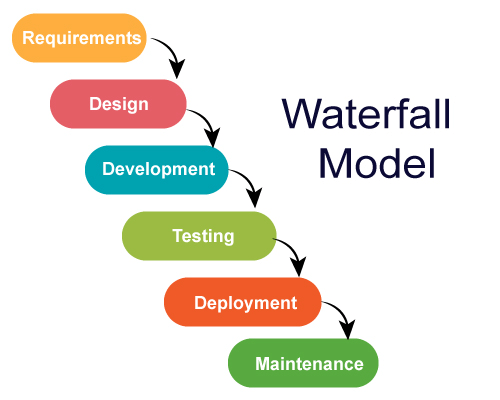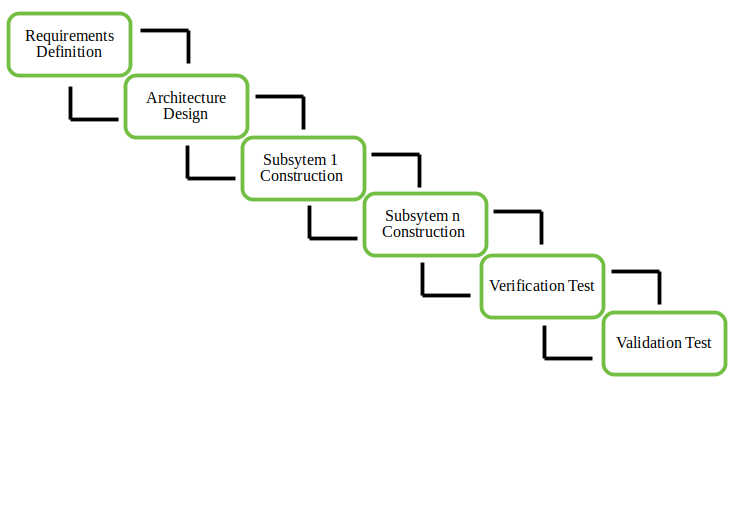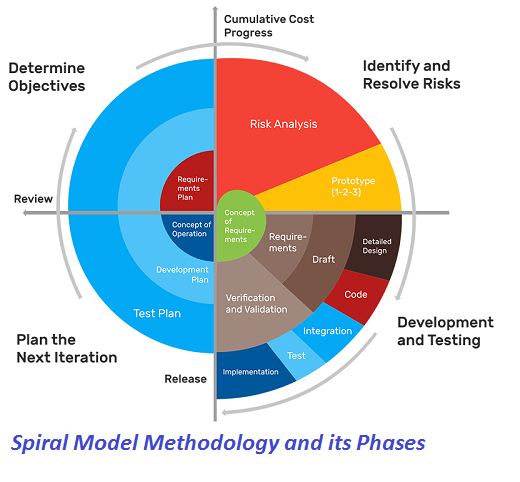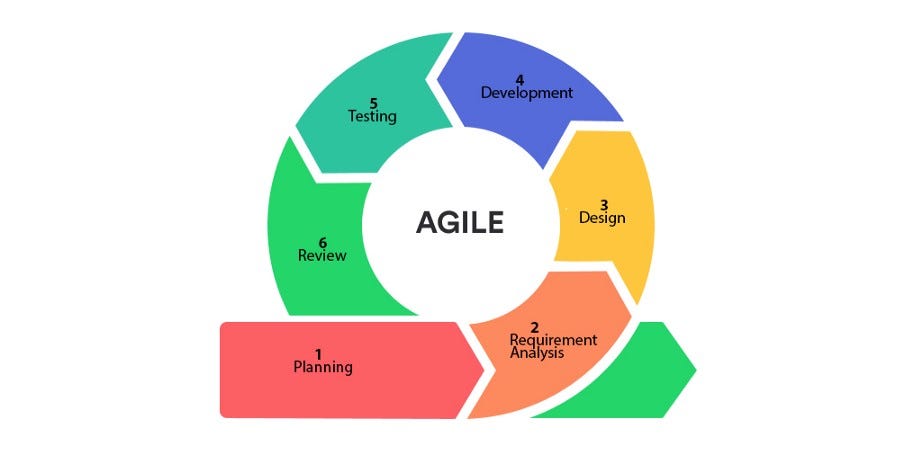The actions involved in
designing, creating, and testing a software system are known as software
processes. Software development is a complex process that involves far more
than technical expertise.
Software process models come in
handy in this situation. A software process model is a depiction of the
development process that is abstract.
In this article, we'll go over the top seven software process models and when they should be used.
Before we start let us see what is process model?
The graphical representation of
business processes or workflows is known as process modeling. Individual steps
of the process are sketched out like a flow chart so that an end-to-end
overview of the tasks in the process in the context of the business environment
can be obtained. A process model allows firms to visualize business processes
so that they can better manage and improve their internal business procedures.
Typically, this is a flexible workout for ongoing improvement.
Process modeling is an important part of process automation since it is necessary to establish a process model first in order to identify activities and optimize the workflow before it can be automated.
So after we understood what is the process model, so for sure there is the question that will come to your mind why should we use the process model or what are the benefits of using process modeling?
Basically, there are many benefits
of using process modeling, So process modeling creates a visual representation
of business processes, allowing them to be examined more readily and allowing
users to better understand how they work in their current condition and how
they might be improved. Process modeling also has the following advantages:
- v
Improve efficiency: Process modeling
aids in the improvement of processes, allowing employees to be more productive
by saving time.
- v
Gain transparency: Modeling
gives a comprehensive picture of the process, defining the beginning and
conclusion points as well as all the phases in between.
- v
Ensure best practice:
Consistency and standardization
are ensured across the organization
when process models are used.
- vCreate understanding:
It makes it easier for users throughout the company
to communicate with one another by adopting a standard language of procedure.
- v Business orchestration: to support corporate strategy by coordinating people, technology, and information across the enterprise
Now we
have understood the advantages of using the process model, moving to the main
parts which is Factors in choosing a process model.
It can be challenging to select the best process model for your project. It will be easier to choose a model that best meets your demands if you have a good understanding of your requirements. When choosing a software process model, bear the following considerations in mind:
Project
requirements: Take some time to go over the project requirements and
define them, as well as your organization's or team's expectations, before
deciding on a model. Will the user be required to detail their requirements
after each iterative session? Will the needs evolve as the project progresses?
Project
size: Take into account the scope of the project you'll be
working on. Larger projects necessitate larger teams, which necessitates more
detailed and elaborate project management plans.
Project
complexity: There may be a lack of clarity in the criteria for complex
projects. The criteria may change often, and delays come at a great price.
Consider whether the project needs frequent monitoring or client input.
Cost
of delay: Is the project
time-sensitive, with a substantial cost of delay, or are the deadlines
flexible?
Customer
involvement: Is it necessary to consult with consumers at any point
during the process? Is it necessary for the user to engage in all phases?
Familiarity
with technology: This includes the developers' understanding and expertise
with the project domain, software tools, programming languages, and development
methodologies.
Project
resources: This refers to the quantity of money, personnel, and other
resources available, as well as their availability.
Here we have seen some points we should put them in consideration while choosing the process model for a project. moving to see the different types of process models which can help us to deploy the project easily by following their strategies models that fulfill a variety of needs. We'll go through the top seven of software process models you should be aware of in the section below.
Waterfall
Model
The waterfall
approach is a sequential, plan-driven process in which all actions must be
planned and scheduled before the project can begin. In the waterfall model,
each action is represented as a discrete phase that is ordered in a linear
sequence.
It has the
following phases:
- Requirements
- Design
- Development
- Testing
- Deployment
- Maintenance
Before moving on to the next phase, each of
these phases creates one or more papers that must be authorized. In actuality,
however, these phases are quite likely to overlap and may share information.
The waterfall paradigm is simple to comprehend
and use. After the specification is completed, there isn't much customer
engagement required. It can't adjust to changes since it's rigid. Until the
final step, there is no way to inspect or test the program.
V Model
The V
model (Verification and Validation model) is an extension of the waterfall
model. All of the specifications are gathered from the outside at the start and
can not be modified. Each step has a testing activity associated with it. A
testing phase is associated with each phase of the development cycle.
The V model is
highly disciplined, simple to comprehend, and facilitates project management.
However, it is not suitable for complicated projects or those with ambiguous or
shifting needs. As a result, the V model is a smart choice for software that
cannot afford downtime or errors.
Incremental Model
The incremental
model separates the system's capability into small chunks that are given in
rapid succession one after the other. In the first increments, the most crucial
functionality is added. The next increments build on the prior ones until
everything is up to date and in place. Incremental development is the process
of creating an initial implementation, testing it with users, and then
improving it with successive versions. The actions in the process are
intertwined via feedback.
With the
incremental methodology, stakeholders and developers may see benefits right
away. If the stakeholders don't like something, it becomes public knowledge
much sooner. It is efficient because coders focus only on what is important,
and errors are repaired as they happen, but you must first define the entire
system in detail. The incremental model is ideal for projects with loosely
linked components as well as ones with comprehensive and well-defined needs.
Iterative Model
The iterative
development model is used to create a system by incrementally adding
functionality. This makes it easier to meet the initial scope fast and get
feedback. You begin by implementing a small set of software requirements in the
iterative model. These are then improved iteratively in subsequent iterations
of the system until it is complete. This strategy begins with a portion of the program,
which is then developed and analyzed in order to discover other requirements.
The iterative
model, like the incremental model, allows you to see the outcomes early in the development
process. This makes identifying and correcting any functional or design faults
a breeze. It also makes risk management and change management easier.
RAD Model
The Rapid
Application Development (RAD) paradigm is built on rapid prototyping and iterative
development with little preparation. For speedier product delivery, you create
functional components in simultaneously. It consists of the following stages:
1. Business
modeling
2. Data
modeling
3. Process
modeling
4. Application
generation
5. Testing
and turnover
The RAD model adapts to changing needs, decreases development time, and improves component reusability. However, it might be difficult to manage. As a result, the RAD approach is ideal for systems that must be built quickly and have well-defined requirements.
Spiral Model
The spiral model
is an iterative development process paradigm that is risk-driven. Projects are
delivered in loops using the spiral concept. Unlike other process models, its
stages are phases for resolving whichever problem poses the highest risk of
failure.
You have the
following phases for each cycle:
1. Address
the highest-risk problem and determine the objective and alternate solutions
2. Evaluate
the alternatives and identify the risks involved and possible solutions
3. Develop a
solution and verify if it’s acceptable
4. Plan for
the next cycle
In the first few
cycles, you build the concept, and then it grows into an implementation. Though
this model is excellent for dealing with uncertainty, maintaining consistent
documentation may be problematic. The spiral model can be utilized for
projects with ambiguous demands or initiatives that are still in the
development stage.
Agile model
Continuous
development and testing iterations are encouraged by the agile process model.
Each incremental portion is built through a series of iterations, each of which
is planned to be tiny and manageable enough to be completed in a few of weeks. Each
iteration focuses on completing the implementation of a limited set of
features. Customers are included in the development process, and casual
communication is used to reduce paperwork.
Agile development considers the following:
- Requirements are
assumed to change
- The system evolves over
a series of short iterations
- Customers are involved
during each iteration
- Documentation is done
only when needed
Though agile
provides a very realistic approach to software development, it isn’t great for
complex projects. It can also present challenges during transfers as there is
very little documentation. Agile is great for projects with changing
requirements.
Some commonly used
agile methodologies include:
- Scrum: Scrum, one
of the most common agile models, is made up of sprints, which are short
iterations. Each sprint lasts from two to four weeks and is preceded by
preparation. After the sprint activities have been established, no
modifications may be made.
- Extreme Programming (XP): • An iteration can last anywhere from one to two weeks using Extreme Programming. Pair programming, continuous integration, test-driven development and test automation, short releases, and simple software architecture are all features of the XP methodology.
- Kanban: Kanban focuses on visualizations, and if any iterations are used they are kept very short. You use the Kanban Board that has a clear representation of all project activities and their numbers, responsible people, and progress.







Great
ReplyDeleteInteresting
ReplyDeleteThanks you for giving us this valuable information
ReplyDelete